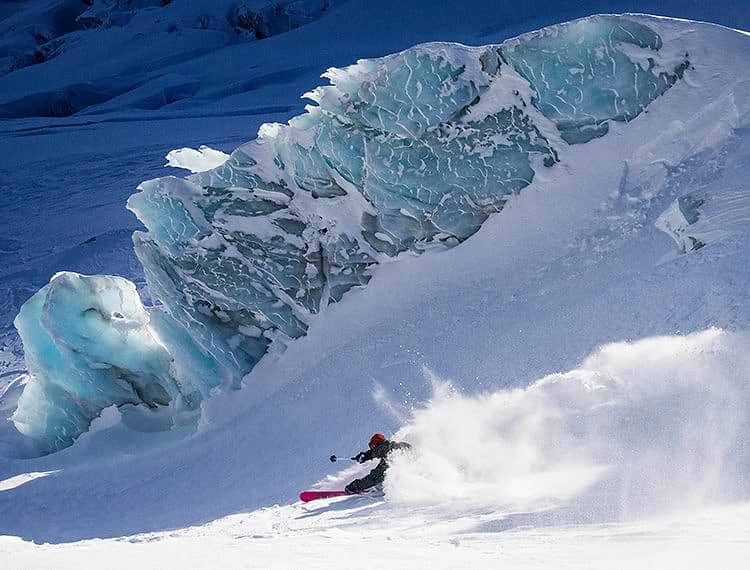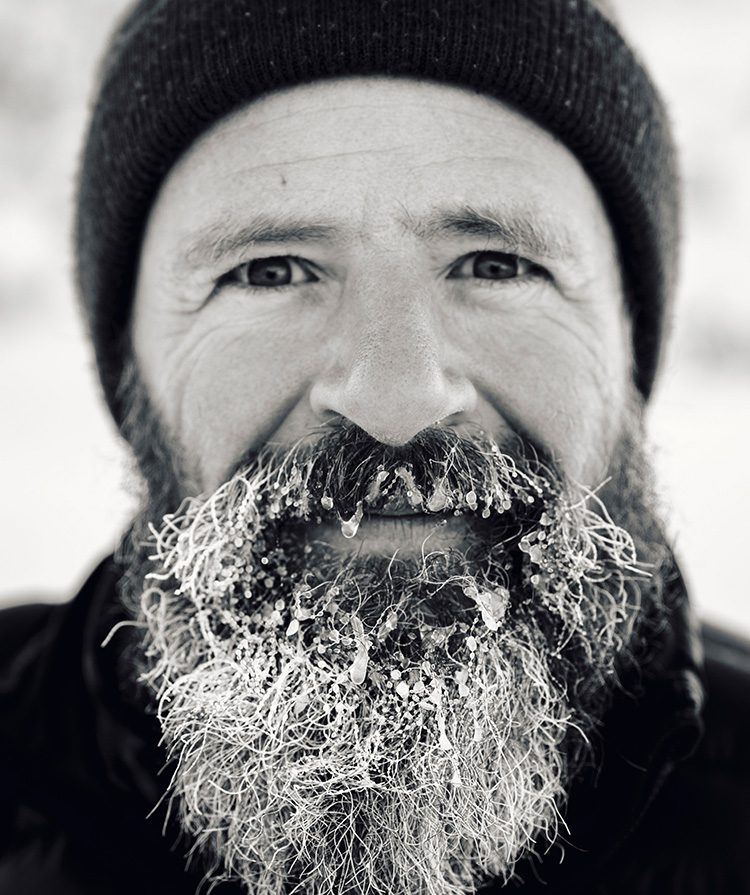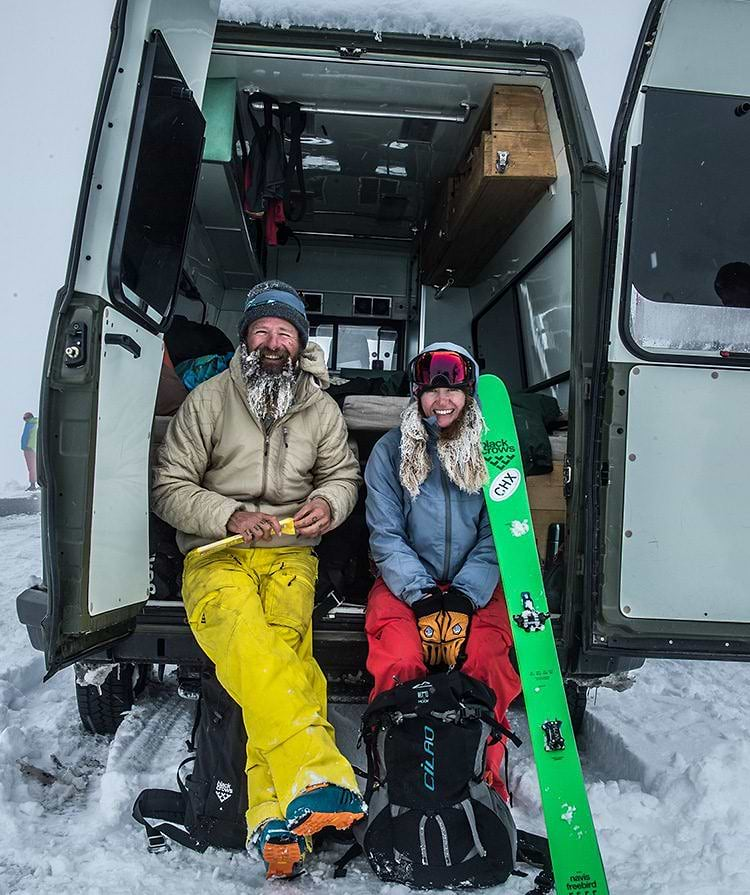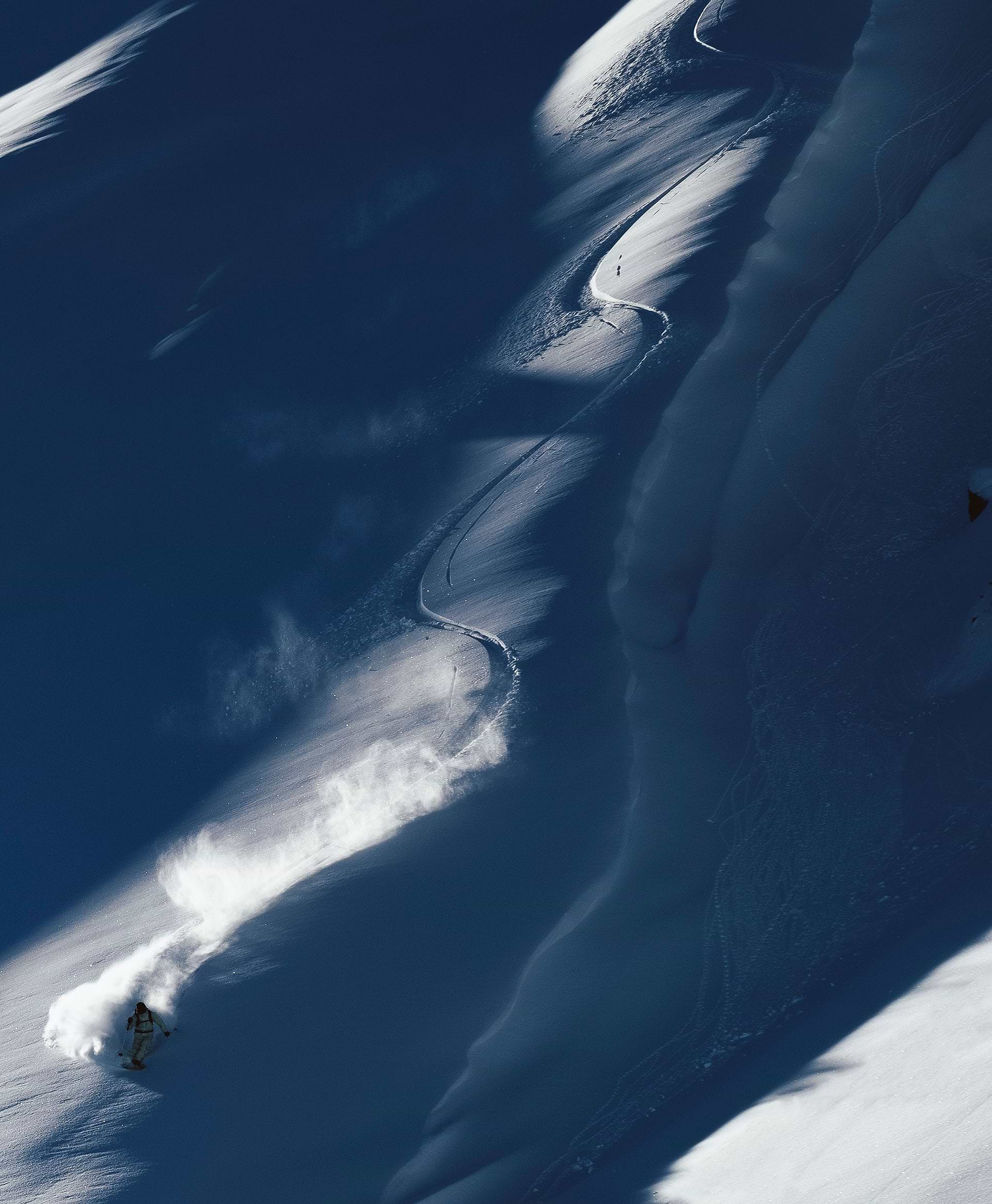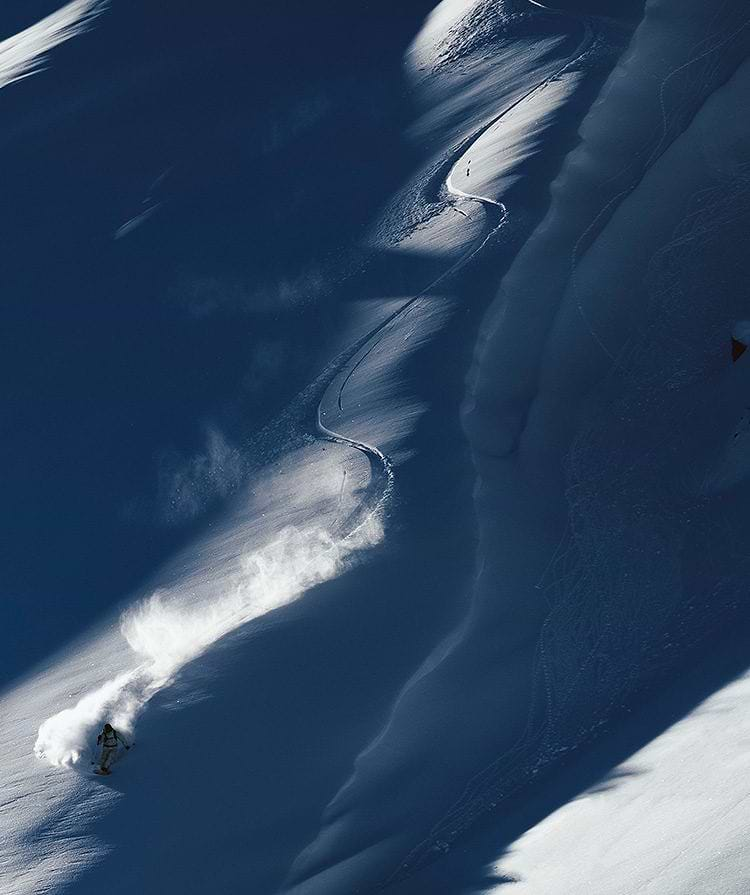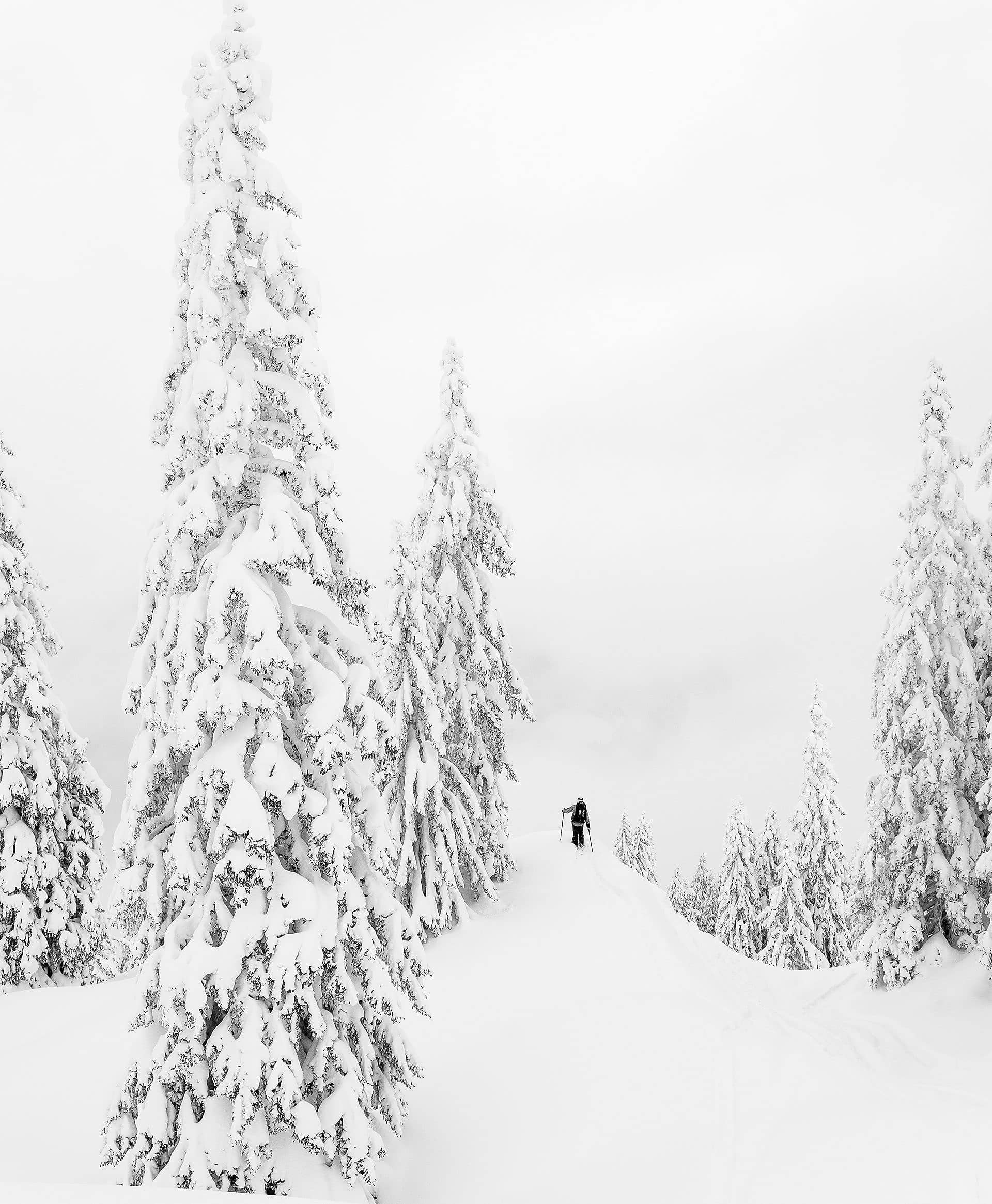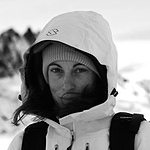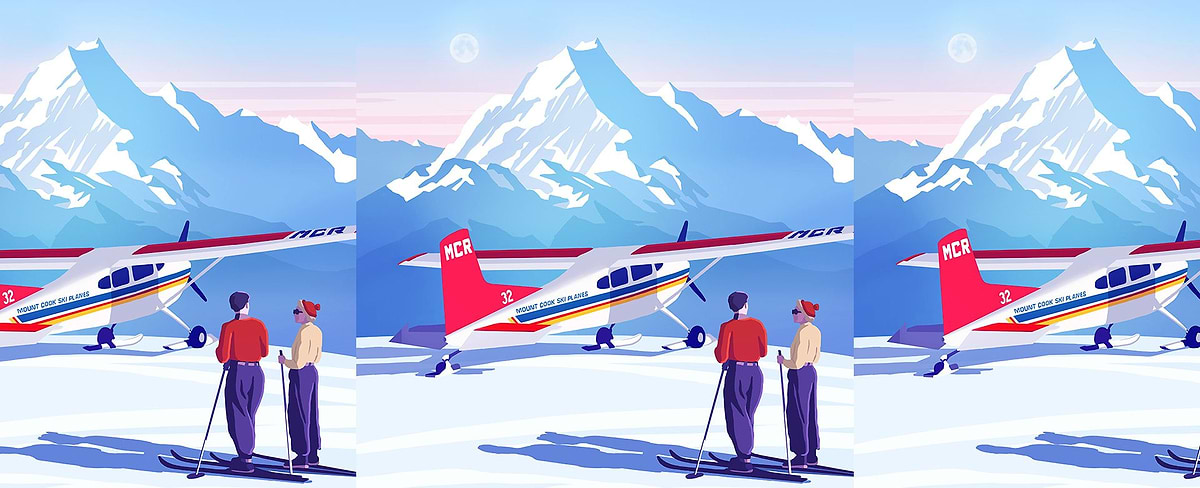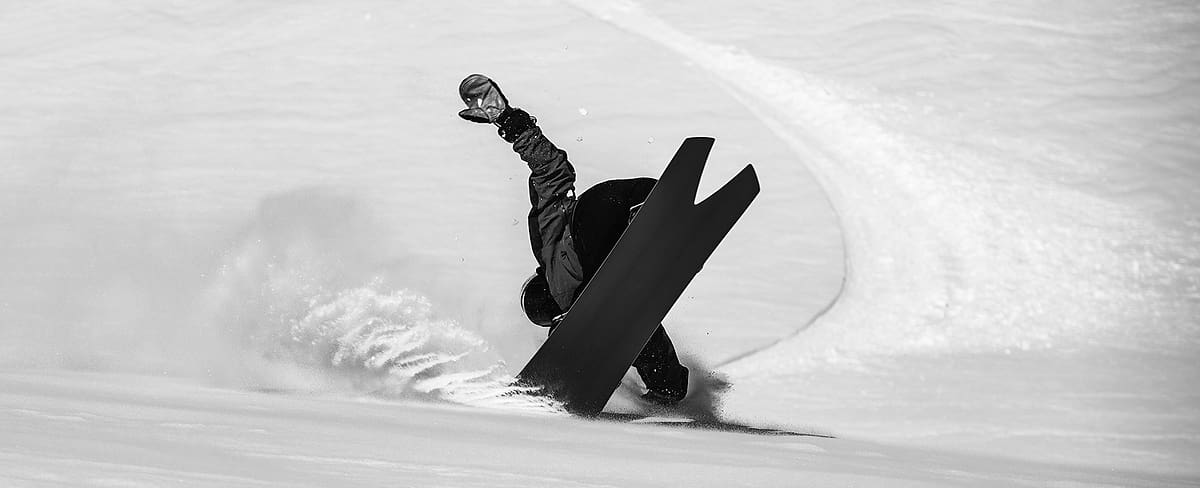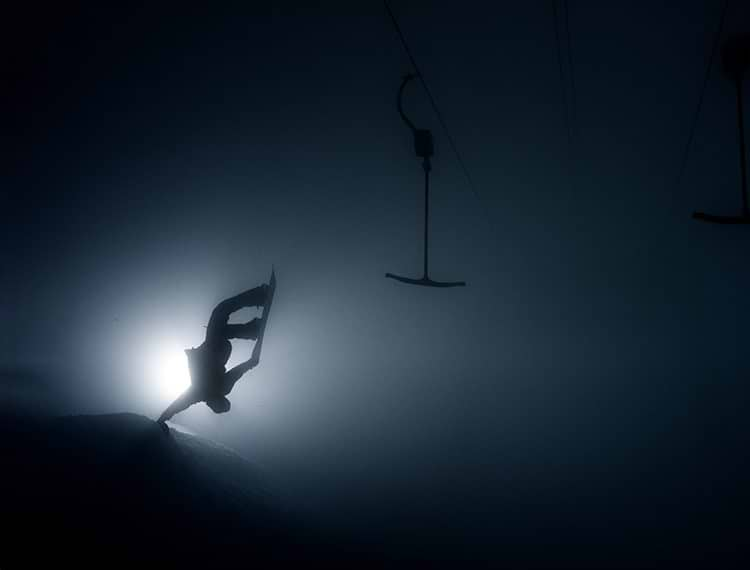Layla and Her Muse
The relationship between a photographer and an athlete can be very similar to that of an artist and his muse. It’s a combination of admiration and trust, a complicity in which both grow, one becoming more creative and the other more magnificent. Some of these associations have become famous in the history of fine art, but almost always in the position of a woman inspiring a male artist.
Today’s freeskiing world has a modern version of those stories, this time with the roles reversed. It’s the story of photographer Layla Kerley and skier Bruno Compagnet.
There’s been three decisive moments so far in Layla’s life. The first came when she was five. Her parents, who were old-school ski bums, decided to move from England to Chamonix, where she eventually grew up. This was back in the 90s; skiing was getting cool again with the rise of freeride, pushed by the impetus of snowboarding and driven by a few iconic figures. Layla grew up in this atmosphere, learning to ski on the slopes of Flégère and looking at the steeper lines through her classroom windows.
The second decisive moment happened in an instant, at the age of sixteen. While having fun at the Grands Montets wrap-up party, she encountered a man on a staircase. Their eyes met, and she thought, “This is the guy I’ll share my life with one day”. The man was Bruno Compagnet, the Pyrenean skier emblematic of the French freeskiing scene. He was competing at Xtreme Verbier, at the peak of his sport, and was sought after by photographers and filmers who loved his style … and dreadlocks. With his friends Camille Jaccoux and Christophe Villemin, he had just founded a little ski brand called Black Crows.
They waited a few years before starting to flirt, time enough for Layla to study contemporary art in Scotland and London, and to decide on the direction she’d give to her life. Layla remembers: “I was fascinated by the ski bum culture of the 1980s through slides I found in my best friend’s attic — her dad was the iconic photographer and filmmaker Gary Bigham,” recalls Layla. “The pics portrayed joyful people skiing naked and partying. I decided to return to Chamonix and live that lifestyle.”
Thus began years of madness, during which Layla worked in a bar until 2 a.m., partied until 5 a.m., then got up at 7 a.m. to go skiing with Bruno. He introduced her to big mountain skiing, taking her to glaciers to ski the runs she had dreamt of as a child. These shared moments were so intense that she started taking photos with her smartphone to capture them.
All this until the third critical moment, around 2015, when Bruno took Layla to ski the Nord-Est des Courtes, one of the steep lines of the Argentière basin, a popular area for avid Chamonix skiers. Going straight from the bar to first climb then descend this gnarly venue proved to be a nerve-wracking experience that convinced her she had to change.
She quit her job and decided to become a photographer, as her passion for the profession was growing, and she was starting to receive compliments for her images. “I’m someone who needs support, and everyone has believed in me and pushed me from the start.” Bruno took her to ISPO in Münich, Germany — the world’s largest sporting goods trade fair — to introduce her to his partners at Black Crows and other key industry players. There, she signed several contracts, and Black Crows gave her a better camera to improve her shots’ quality and professional credibility.
After watching Bruno enjoy an exciting life of travel and adventure, she had found a way to be fully part of it: “‘If you can’t beat them, join them!’” was my motivation for earning my place in the ski industry,” she laughs.
Since then, Layla and Bruno have travelled the world with their skis and her camera, multiplying their ascents and photos. Over time, their collaboration grew in life and on shoots: “We hardly need to talk anymore,” she explains. “We have an exceptional harmony and a total understanding of each other.”
They have become one entity: Layla and Bruno. She explains,” This image of a ski bum traveling couple is not fabricated — it’s real — that’s how we live.” Among the destinations that left their mark are a trip to the Balkans, punctuated by memorable encounters, a winter in the deserted Dolomites while COVID confined Europe and multiple trips to the Lyngen Alps in northern Norway.
By giving Bruno the chance to be featured in many more photos, she has helped prolong his career. At 55, he remains a skiing icon in a sport that increasingly favours the young and continues to live his passion as he always has. It’s a relationship in which everyone benefits.
Photography provided Layla with a way of expressing herself, and a medium that touches people more quickly than contemporary art. ”Photography is easier to understand than an installation; it’s less elitist,” she says. Layla’s talents are increasingly recognized. She has created her own style, which has opened new doors for her and won her peers’ respect. She continues to create images for the companies that first supported her but has also expanded her client base and subject matter — sometimes straying from the snowy peaks and her muse.
In particular, the 31-year-old Layla is keenly interested in the history of mountaineering and ski culture. She likes to portray characters who have lived their lives to the fullest and are now simply quiet and inconspicuous elders in the Chamonix Valley. She also likes to profile ski bums she’s met on her trips who have decided to make a home in isolated and exotic places to fully enjoy their passion. In this way, Layla is helping to document the unique culture and characters of freeskiing that first inspired her — and is preserving it all for perpetuity.





